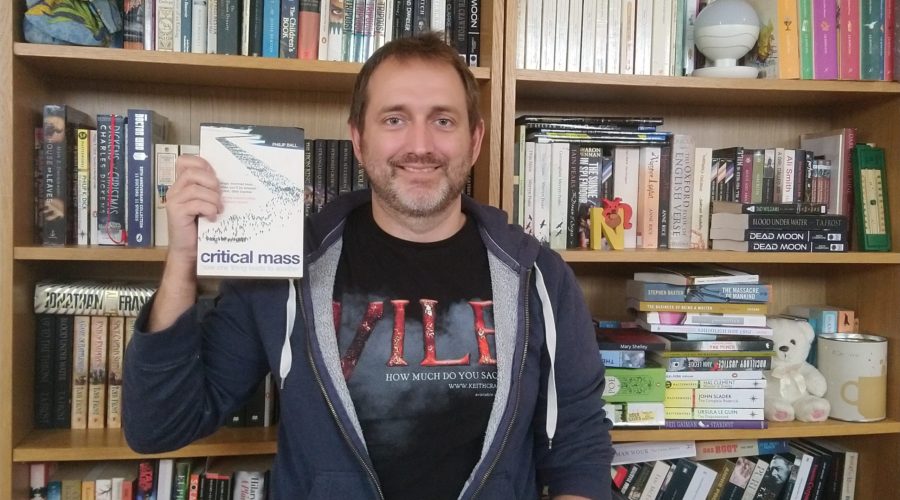Link: Amazon, Goodreads. Price: £10.99
The blurb purports that the book will help us understand a science of society that enables us to predict and analyse human behaviour by looking at the impact of decisions taken in large groups. Or something like that – it isn’t terribly clear. The interior is concerned with the discipline of econophysics – applying statistical physics to economics to understand how individual behaviours emerge in group outcomes, from traffic and the stock exchange to the ways in which people try to escape a burning building. Economics has striven to become more scientific for decades: in this book Ball demonstrates how that can be achieved.
There are many things I’d like to say about this book: a masterpiece; a work of extraordinary depth, breadth, and ambition; a work that successfully made me feel under-read; an important step forward in showing means by which economics can better model social behaviour. I’d like to say them because they are true.
But I find myself wondering who this book was written for? I have more degrees than any one person should have, but it took me two weeks to read Critical Mass, during which time I had to read several other articles and get advice from better qualified friends to understand what I was reading.
The book claims to be about human interaction but approximately the first 150 pages are pure statistics and physics. Ball has an annoying habit of explaining something, getting you to the point where you understand, then telling you why what you thought you understood was wrong. Because he’s a physicist (all of physics is like this). Critical Mass reads like an exceptionally ambitious doctoral thesis, opening with a remarkably deep literature review then provide examples of his method in action. But why read it?
Well, if you want to understand it, you’re going to have to work at it. But if you put the time and thought in, you’ll see how social change can operate like first order transitions, such as between ice, water and steam; how the critical point of change can create great instability; what it actually means for a particle to act as a wave and what this would look like if particles were people; and an actual argument for game theory as a source of hope. Most importantly Ball explains how. This was not an easy read, because the subject is very hard, and no amount of excellent writing can make statistical physics easy.
However, if you’re an economist, or a psephologist, or a particularly brave sociologist, you owe it to yourself to read this. I wouldn’t recommend this for a casual reader, but if you trade is understanding social behaviour you can’t afford to let this book pass you by.



